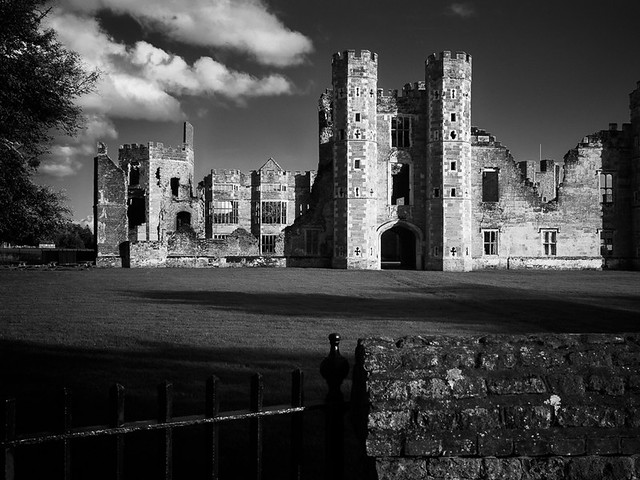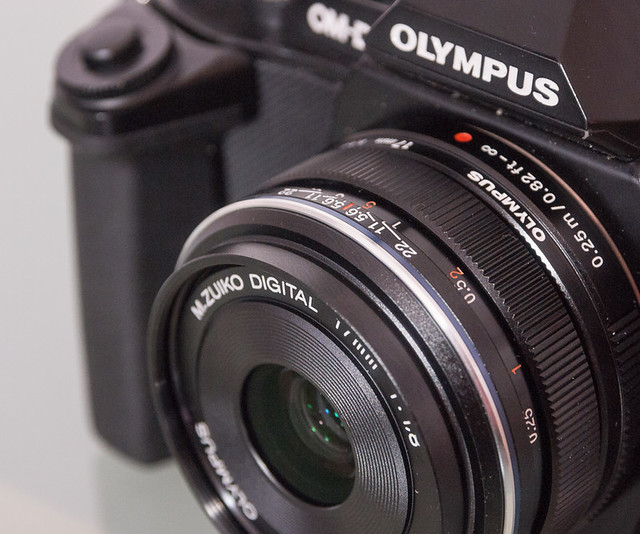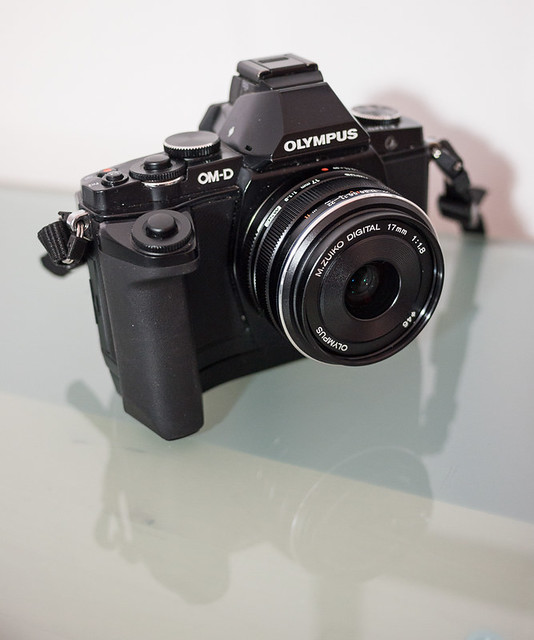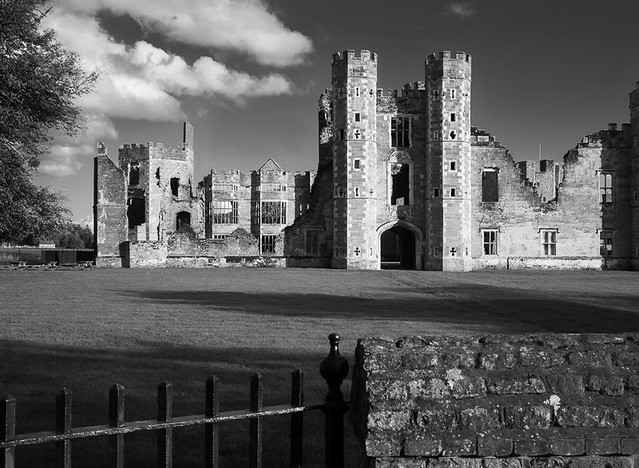 |
| Cowdray Ruins |
Faced with the choice of having just one lens what would it be? A prime lens or a zoom lens? If it had to be a prime lens then the vast majority of photographers would choose a focal length of either 35mm or 50mm. The latter is closest to the same field of vision as the naked eye, whereas a 35mm lens is a moderate wide angle. Both are very versatile but of the two my personal choice would be a 35mm lens.
I use a micro four thirds camera, the Olympus OMD EM5, which has a crop factor of x2, so the equivalent focal length for this camera format is 17.5mm. Although I can cover both 35mm and 50mm full frame focal lengths using the Panasonic 12 to 35 f2.8 zoom lens, there is nothing quite like having a compact, fast and sharp prime lens attached to the camera. Any prime lens encourages a more creative approach to photography. You have to frame your shot by moving your feet as opposed to twisting a barrel on the lens. A wide aperture can give a more limited depth of field, throwing backgrounds out of focus. In this respect it will never be a match for a full frame camera, but for my requirements this lens more than serves its purpose.
 |
| The Olympus 17mm f1.8 prime lens |
So in the past few days I decided to buy the Olympus 17mm f1.8 lens. In no way is this a review, but the all metal lens in black looks wonderful on the camera, is very fast to auto focus and has a ring which can be pulled back for manual focusing. It also reveals a distance scale which combined with the Depth of Field markings allow 'zone focusing', a technique often used by street photographers.
 |
| The 17mm on the Olympus OMD EM5 |
Having only had the lens for a few days I have not yet had the chance to put it through its paces but I already think it could well become my default choice when I want to travel light with just the camera and a single lens.
I did though have the opportunity to take a couple of shots of Cowdray Ruins in Midhurst. I set the camera to take both RAW and JPEG (Fine). Set to f8, ISO 200 and a shutter speed of 1/250th of a second, the JPEG straight out of the camera is I think very pleasing. Sharp across the frame and good colours from the Olympus processor.
 |
| Cowdray Ruins - JPEG straight out of the camera |
The RAW version was of course just asking to be converted to black and white.......
 |
| The first mono version |
 |
| This is the same image as the one at the top of this post but with a 'coffee' tint added in Silver Efex Pro2 |
Of the four versions I have my own personal favourite (it's at the top for a reason) however this post was intended to be about a superb lens which I know will give me many hours of pleasure in time to come. With luck I will get out and about in the next few days to see just how capable it is in different conditions.
As an aside the Ruins at Cowdray in Midhurst, West Sussex are truly magnificent and I will definitely be returning to explore the photographic opportunites at some point in the future.
As an aside the Ruins at Cowdray in Midhurst, West Sussex are truly magnificent and I will definitely be returning to explore the photographic opportunites at some point in the future.

No comments:
Post a Comment